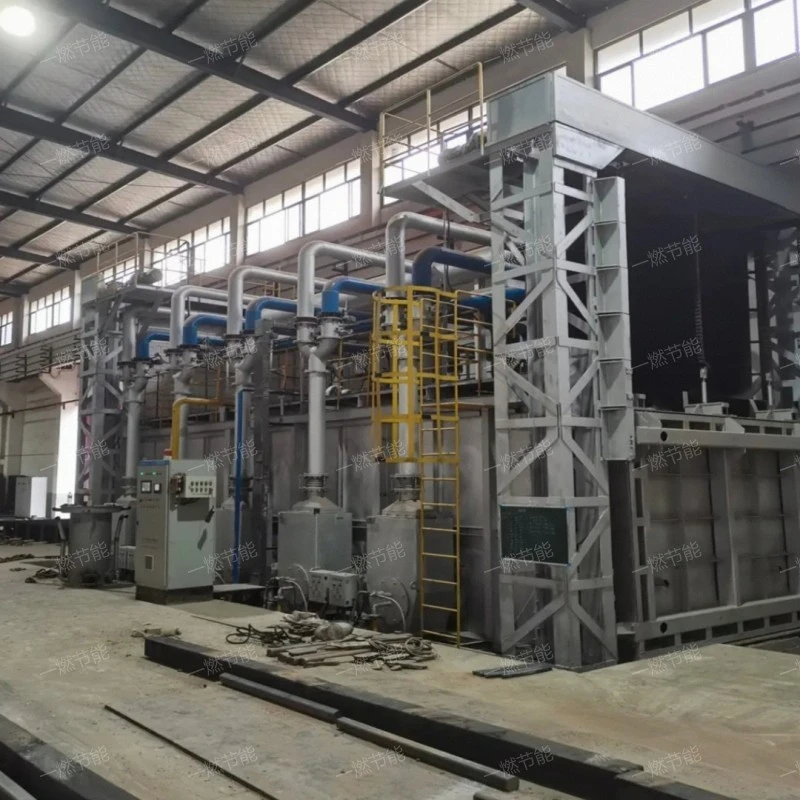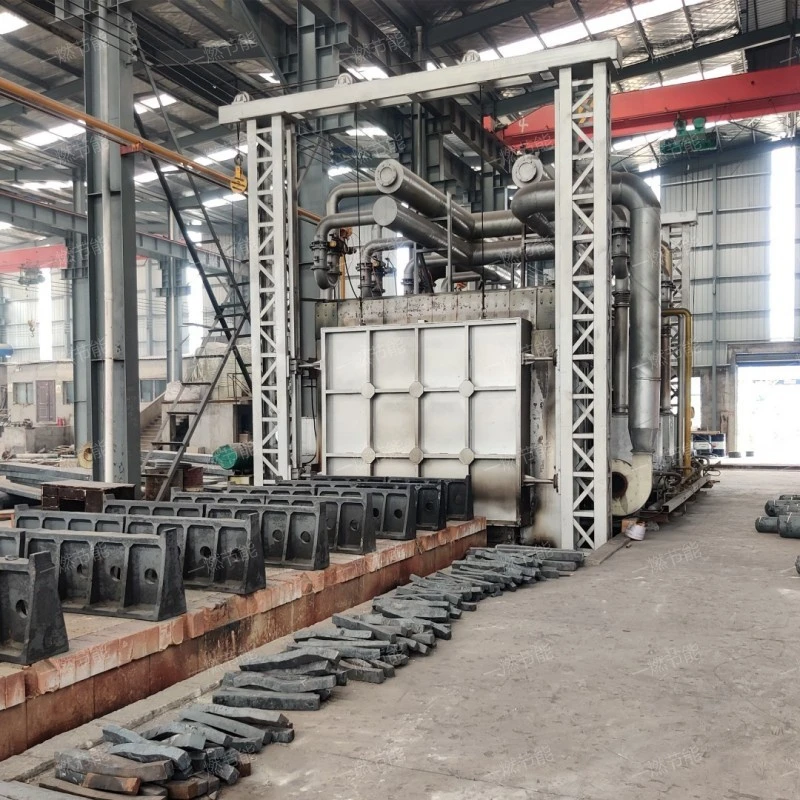What is a Low temperature catalyst flue gas denitrification system? How much is the price of the SCR denitration?
Low temperature catalyst flue gas denitrification systemthat is, selective catalytic reduction technology is a technology used to reduce the emission of nitrogen oxides in flue gas.,the product looks beautiful.,was developed and designed by One-combustion energy saving。The following is to introduce the Low temperature catalyst flue gas denitrification system:
1、Brief introduction of Low temperature catalyst flue gas denitrification system
Low temperature catalyst flue gas denitrification systemthat is, selective catalytic reduction technology is a technology used to reduce the emission of nitrogen oxides in flue gas.,it has the functions of Improve working conditions, environmental protection, Promote sustainable development, environmental protection and Promote sustainable development。

Low temperature catalyst flue gas denitrification system
2、Structural characteristics of Low temperature catalyst flue gas denitrification system
The Low temperature catalyst flue gas denitrification system has the following structure
- Catalytic reduction reaction
- control system
- Reducing agent storage and supply system
- Flue gas mixing and distribution
- Reducing agent supply
Under the action of catalyst, the reductant and NOx in flue gas undergo selective catalytic reduction reaction to generate nitrogen and water vapor.
The whole Low temperature catalyst flue gas denitrification system is automatically controlled to ensure the stable operation of the system and achieve the expected denitration effect.
Used to store and supply reducing agent (such as ammonia or urea solution) to the reactor.
The mixed reducing agent and flue gas are fully mixed in the mixing tube and evenly distributed to the catalyst reactor through the distribution system.
Reducing agents such as liquid pure ammonia or ammonia water (aqueous solution of ammonia) are evaporated and mixed with diluted air or flue gas.

Low temperature catalyst flue gas denitrification system
3、Low temperature catalyst flue gas denitrification system characteristics
The Low temperature catalyst flue gas denitrification system features are as follows:
- energy saving and environmental protection
- Strong adaptability
- Environmental protection
- Mature technology
- High denitration efficiency
This technology can effectively reduce NOx emission in flue gas, reduce environmental pollution, and at the same time, it has stable operation and low energy consumption, which meets the requirements of energy saving and environmental protection.
Low temperature catalyst flue gas denitrification system technology can meet the needs of flue gas denitrification under different working conditions and has a wide range of applications.
The final products of Low temperature catalyst flue gas denitrification system technology are harmless nitrogen and water vapor, which will not cause secondary pollution to the environment.
After years of development and application, Low temperature catalyst flue gas denitrification system technology is very mature and has a wide application prospect.
The denitration efficiency of Low temperature catalyst flue gas denitrification system technology can reach more than 90%, and it is a widely used post-combustion denitration technology at present.

Low temperature catalyst flue gas denitrification system
4、Low temperature catalyst flue gas denitrification system real shot picture
A variety of series of Low temperature catalyst flue gas denitrification system pictures are displayed, with exquisite design, reliable quality and trustworthiness.。

Low temperature catalyst flue gas denitrification system
Note: All the pictures in this article were taken by One-combustion energy saving manufacturer.。
5、Low temperature catalyst flue gas denitrification system advantage
The advantages of Low temperature catalyst flue gas denitrification system are as follows:
- Diversity and high efficiency of catalysts
- Intelligent control and convenience of operation
- Wide applicability
- Environmental friendliness
- High efficiency denitration capacity
There are many kinds of catalysts used in the Low temperature catalyst flue gas denitrification system technology, including vanadium-based catalysts and titanium-based catalysts, which can promote the chemical reaction between reductant and NOx at low temperature. At the same time, the active components and carrier materials of the catalyst are constantly being developed and improved to improve its catalytic efficiency and service life. This enables the Low temperature catalyst flue gas denitrification system technology to maintain high efficiency of denitration in a wider temperature range and more complex flue gas conditions.
The Low temperature catalyst flue gas denitrification system has gradually realized intelligent control. By integrating advanced control system and sensor technology, the Low temperature catalyst flue gas denitrification system can monitor the composition and emission concentration of flue gas in real time, and automatically adjust the injection amount of reductant and the active state of catalyst to ensure the stability and reliability of denitrification efficiency.
Low temperature catalyst flue gas denitrification system technology is suitable for many industries and processes, such as coal-fired power plants, iron and steel smelting, cement production and so on. These industries will produce a large number of NOx emissions in the production process, and the Low temperature catalyst flue gas denitrification system technology can provide effective denitrification solutions for them. In addition, the gate technology can be adjusted and optimized according to different flue gas components and emission requirements to meet different denitration requirements.
The by-products produced by Low temperature catalyst flue gas denitrification system technology are mainly nitrogen and water vapor, which are harmless to the environment and will not cause secondary pollution. Compared with the traditional wet flue gas denitrification technology, the Low temperature catalyst flue gas denitrification system technology does not need to use a lot of water resources and will not produce pollutants such as wastewater, which is more in line with the requirements of environmental protection and sustainable development.
Gate is famous for its high efficiency of denitration, which can usually reach more than 90% denitration efficiency. This means that the Low temperature catalyst flue gas denitrification system technology can significantly reduce the concentration of nitrogen oxides (NOx) in flue gas and make it meet strict environmental protection emission standards. This high-efficiency denitration ability mainly benefits from the promotion of catalyst, which makes the chemical reaction between reductant and NOx more rapid and thorough.

Low temperature catalyst flue gas denitrification system
Low temperature catalyst flue gas denitrification systemCommonly used inenvironmental protection,Meet the requirements of environmental protection,Promote sustainable development,Improve product quality,Flue gas denitrification and so on,it has the characteristics of High denitration efficiency, Mature and stable technology, Strong adaptability, Strong adaptability and Promote sustainable development,the product looks beautiful.。
Related recommendation
-

What is a Three-stage gas heating furnace? Introduction to the principle of forging furnace structure
2025-5-27 -

Introduction to Axial flow annealing industrial furnace, introduction to Forging furnace function advantages and characteristics
2025-5-27 -

Introduction to Large trolley resistance furnace and Trolley resistance furnace working principle
2025-5-27 -

What is a Low temperature SCR flue gas denitrification system? How much is the price of the SCR flue gas denitrification?
2025-5-27 -

What is a Automatic temperature control step heat treatment furnace? Introduction to the advantages and characteristics of the heating furnace
2025-5-27 -

Introduction to Rapid quenching industrial furnace and forging furnace advantages and features
2025-5-27 -

Introduction to High temperature industrial furnace, introduction to forging furnace function advantages and characteristics
2025-5-27 -

What is a Industrial furnace double chamber type? Introduction to the advantages, characteristics, and principles of the heating furnace
2025-5-27 -

What is a Continuous bright heat treatment heating furnace? Introduction to the advantages, characteristics, and principles of the forging furnace
2025-5-27 -

Introduction to Roller type ball annealing furnace, forging furnace specifications, model parameters
2025-5-27




